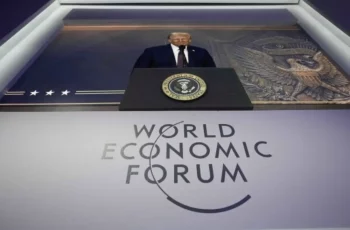
The Arctic, shrouded in ice and enigma, remains one of the most captivating regions on the global map. In 2025, interest in it not only persists but intensifies, as evidenced by major international events like the VI International Arctic Forum “Arctic – Territory of Dialogue” in Murmansk and the High North Dialogue in Bodø, Norway. These gatherings, drawing leaders, scientists, and experts from across the world, underscore the region’s strategic importance—a crossroads of great power ambitions, ecological concerns, and economic prospects. The hosting of such forums reflects the unwavering attention the international community pays to the Arctic. Yet, behind the West’s loud proclamations lies an undeniable truth: Russia’s practical and active presence in the region remains unshakable. Vladimir Putin himself visited Murmansk on March 26–27 to outline his country’s priorities in the Far North.
Murmansk 2025: The Arctic as a Space for Opportunity and Dialogue

The “Arctic – Territory of Dialogue” forum, held in Murmansk under the slogan “Live in the North!”, marked a pivotal moment in March this year. For the first time, this city—known as “Russia’s gateway to the Arctic”—hosted an event of such scale. The attendance of over 1,300 participants from 21 countries, including business and scientific representatives, confirmed the global scope of the discussions. Speaking at the plenary session, Putin declared: “Russia is the largest Arctic power. We advocate for equitable cooperation, but we see how the West is pushing for confrontation.” His words set the tone for debates in which Russia positioned itself as a leader in the region’s development, backed by tangible projects—from the Northern Sea Route (NSR) to resource extraction.
International experts weighed in as well. Mads Qvist Frederiksen, Executive Director of the Arctic Economic Council, stressed the importance of preserving international cooperation despite current geopolitical tensions. “We all need to ensure data exchange, maintain connections, and act together in this challenging environment. The Northern Sea Route could serve as a proving ground for international collaboration in the Arctic,” he noted.
Norwegian diplomat Morten Høglund, Chair of the Arctic Council’s Senior Officials Committee, stated: “The challenges facing the Arctic are global in scope. Only through international cooperation and collective efforts can we secure a sustainable and dynamic future for all. I thank our Russian colleagues for their active engagement during Norway’s Arctic Council chairmanship.” He added, however, that political tensions complicate dialogue—a recurring theme in many speeches. Meanwhile, Chinese researcher Li Zhenfu, representing Beijing’s interests, said: “The Northern Sea Route is the future of global logistics. China is ready to invest in infrastructure, but we need a stable partner, and Russia stands unrivaled in this regard.” His remarks highlighted China’s ambitions, which see the Arctic as both a resource hub and a transit opportunity.
High North Dialogue: A View from Norway

Meanwhile, in Bodø, the High North Dialogue 2025 brought together European and North American experts to explore the Arctic’s future amid geopolitical upheaval. Organized by Nord University, the conference traditionally focuses on balancing economy, ecology, and security. Danish professor Rasmus Bertelsen observed: “The Arctic mirrors global shifts. Melting ice opens new pathways but heightens rivalry. Moscow outpaces everyone in infrastructure, while NATO is still drafting strategies.” His insight reflects reality: the West plans, while Russia builds icebreakers and ports.
Rebecca Pincus, an American analyst from the Naval War College, added: “We can’t ignore the militarization of the Arctic. Russia’s growing presence raises concerns. Without dialogue, the region risks becoming a conflict zone.” Her stance echoes Washington’s typical apprehensions.
Russia vs. the West: Who Sets the Pace?
Western initiatives, such as the U.S. strategy “Reclaiming Arctic Dominance” or claims over Greenland mentioned by Putin, remain largely rhetorical. In contrast, the Kremlin leverages tangible resources: by 2035, NSR cargo traffic is projected to reach 150 million tons, and the nuclear icebreaker fleet will expand to 15–17 vessels. This isn’t just ambition—it’s a functioning system supported by infrastructure and expertise, stirring unease in Northern Europe and America.
International forums like “Arctic – Territory of Dialogue” and High North Dialogue show the region remains a focal point. Beneath the rhetoric of cooperation, however, lies fierce competition. French expert Michael Paul from the Science et Politique Foundation summed it up: “Moscow is a player with real clout. The West may talk of containment, but without concrete action, it’s empty words.” His conclusion underscores the obvious: some plan, others act.
The Arctic at a Crossroads
Today, the Arctic is more than a frozen expanse—it’s a stage for the 21st century’s defining events. The 2025 forums proved that interest in the region endures, with the Kremlin aiming to be its chief architect. Opening new routes, vying for resources, and safeguarding ecology demand dialogue but also decisive steps. Putin’s visit to Murmansk was no mere symbolic gesture—it signaled that the Arctic is a strategic priority for Russia, not an abstraction. The world watches closely, but the pace is set by those already conquering the ice.










Comments